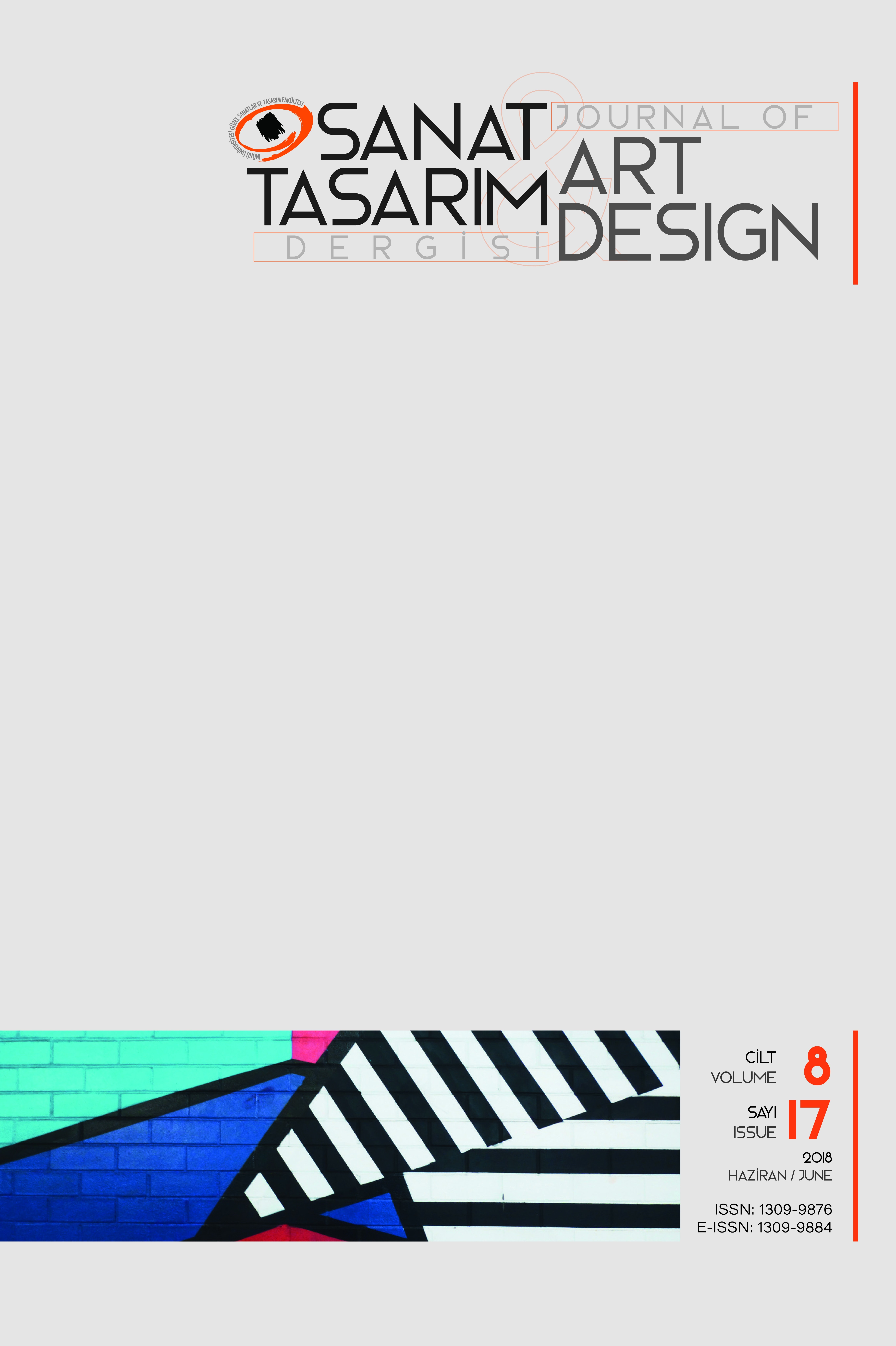Çukurova, Mustafa Kemal ve Toros Üniversiteleri Tasarım Öğrencilerinin Manzara Algılarına Yönelik Bir Araştırma
Manzara, Görsel Algı, Görsel Peyzaj, Peyzaj Tasarımı, Tasarım Öğrencileri, Landscape, Visual Perception, Visual Landscape, Landscape Design, Design students
___
- Altunkasa, C. (2015). Tasarım Öğrencilerinin Manzara Algıları Üzerinde Bir Araştırma. Ç.Ü. Peyzaj Mimarlığı Lisans Programı Lisans Tezi (Danışman Doç Dr. Cengiz USLU), Adana.
- Bernasconi, C., Strager, M.P., Maskey, V., & Hasanmyer, M. (2009). Assessing public preferences for design and environmental attributes of an urban automated transportation system. Landscape and Urban Planning, 90, 155–167.
- Clay, G.R., & Daniel, T.C. (2000). Scenic Landscape Assessment: the effects of land management jurisdiction on public perception of scenic beauty. Landscape and Urban Planning, 49, 1-13.
- Çakcı, I. & Çelem, H. (2009). Kent Parklarında Görsel Peyzaj Algısının Değerlendirilmesi. Ankara Üniversitesi, Ziraat Fakültesi, Tarım Bilimleri Dergisi, 15(1) 88-95.
- Francescato, D., & Mebane, W. (2005). How Citizens View Two Great Cities: Milan and Rome, in Image & Environment: Cognitive Mapping and Spatial Behavior. Eds: Roger M. Downs, David Stea, Transaction Publishers.
- Kancıoğlu, M. (2005). Çevresel İmaj, Kimlik ve Anlam Kapsamında Turizm Binalarına İlişkin Kullanıcı Değerlendirmeleri. Uludağ Üniversitesi Mühendislik-Mimarlık Fakültesi Dergisi, 10(2), 49-62. Kaplan, R., Kaplan S., & Ryan R.L. (1998). With People in Mind. Island Press, 239.
- Önem, B. & Kılınçaslan, İ. (2005). Haliç Bölgesinde Çevre Algılama ve Kentsel Kimlik”, İTÜ Dergisi/a, Mimarlık, Planlama ve Tasarım, 4(1), İstanbul, 115-125.
- Özak, N.Ö. & Gökmen, G.P. (2009). Bellek ve Mekan İlişkisi Üzerine Bir Model Önerisi. İTÜ Dergisi/a, Mimarlık, Planlama ve Tasarım, 2(8), İstanbul, 145-155.
- Parsons, R. & Daniel, T.C. (2002). Good looking: in defense of scenic landscape aesthetics. Landscape and Urban Planning, 60, 43-56.
- Santos-Delgado, R. (2005). Architectural Landmarks in Davao Cıty: Value-Based Approach to the History of Architecture. Banwa 2(1): 38-62.
- Türkoğlu, H. (2002). Kentsel İmge: İstanbul’dan Bulgular. İTÜ Dergisi/a, Mimarlık, Planlama ve Tasarım, 1(1), İstanbul, 57-64.
- http://www.tdk.gov.tr/index.php?option=com_gts&kelime=manzara
- http://tr.wikipedia.org/wiki/Peyzaj
- ISSN: 1309-9876
- Başlangıç: 2011
- Yayıncı: İnönü Üniversitesi
Tarih ve Kültür Temalı Parklar
Açık Mekanlardaki Oturma Donatılarının ve Yerlerinin Tasarımına İlişkin Faktörler
Sema MUMCU, Serap YILMAZ, Tuğba DÜZENLİ
Engelli Ziyaretçilerin Korunan Alanlara Erişiminin Desteklenmesi; Küre Dağları Milli Parkı Örneği
The Use of Water Features in the Palace Landscapes of the Late Ottoman Era
İkonik Fotoğrafları Yeniden Üretmek: Sandro Miller’ın Malkovich, Malkovich, Malkovich Portreleri
Müzik Tercihlerine İlişkin Kuramsal Bir İnceleme
Hande Sanem ÇINAR ALTINÇEKİÇ, Reyhan ERDOĞAN
Türkiye’de Peyzaj Uygulamalarında Ahşap Malzeme Kullanımı
Aybike Ayfer KARADAĞ, Derya Sevim KORKUT, Süleyman KORKUT, Güzide Pınar KÖYLÜ, Güniz AKINCI KESİM
Açık ve Yeşil Alanların Kullanımını Teşvik Eden Mobil Uygulamalar: Pokemon Go Örneği
